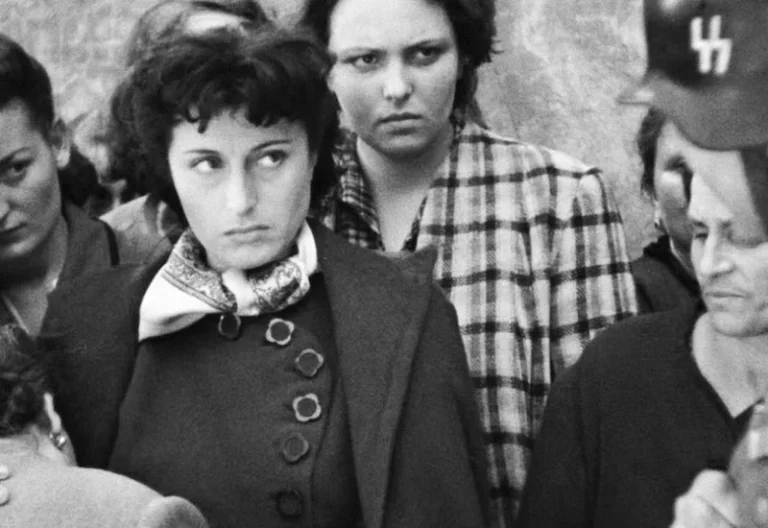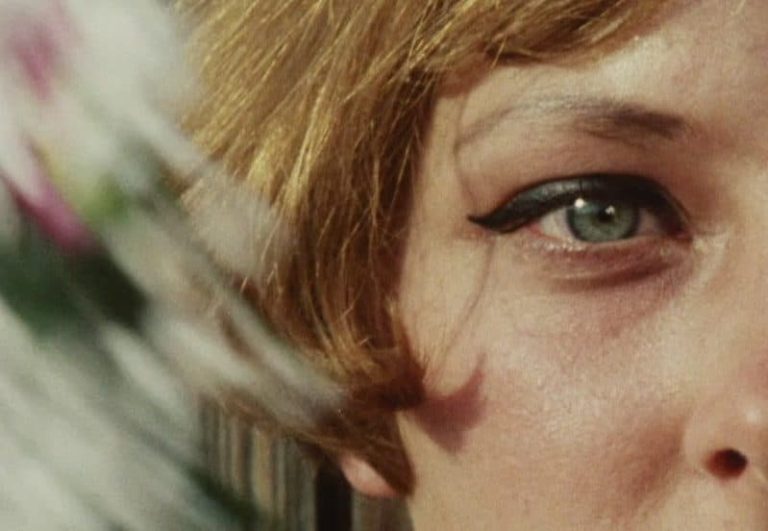juliet of the spirits review
film by Federico Fellini (1965)
Fellini’s first color film and continued collaboration with actress and wife Giulietta Masina is a project many would argue is a cathartic expression borrowing from their personal lives. The husband and wife duo again treat us with a layered character study of a woman finding independence and realized through its opulent splendor and mysticism rivaling the imagination of Dr. Seuss. The use of color enhances what is already there, cementing its visual style of the 60s, which we still borrow from increasingly today.
Review by: Aaron Jones | Filed Under: Film Reviews
February 19, 2024
Fellini uses an unconventional narrative approach, replacing it with a surrealist vision and showing a Camelot world in smithereens. Giulietta (Giulietta Masina), a neglected housewife, lives a bourgeois lifestyle in a fairy tale home entrenched in superficial vanity and slowly begins to suspect her husband of infidelity. Her fear of abandonment is coupled with a fear of identity loss, as her individuality lies within the presence of her husband and marital status. In her restless state, she participates in a seance performed by her friends and a clairvoyant, which catalyzes her melancholic doubt and psychological shift, becoming a doorway for self-reflection.
As the Pandora’s box of her inner experience opens, Giulietta soon finds that her life resembles anything but a fairy tale. The bourgeois search for answers through pseudo-science and parlor tricks, in hopes of acquiring secret knowledge to reinforce one’s own imagined superiority, fails to answer any of her questions and only reinforces the alienation she experiences. Giulietta’s life of luxury and indulgence in the superficial offers nothing of enlightenment but more resembles self-advancement through how one is perceived and the reinforcement of one’s ego.

Interest in building relationships with others through shared experience, intimacy, and trust is replaced by superstitions, cheap thrills, and the cult of personality rooted in magical thinking with promises of solutions to problems of one’s own making. Giulietta’s vulnerability manifests in the shape of hallucinations and dreams haunted by spirits of the past, translating her emotional imbalance visually on screen. She stands as a symbol of a traditional woman embarking on modernity, one whose prospects and sexuality are limited by her attachment to convention and religious piety, fearful of being an accomplice to sin.
Further illustrating the seductive allure of splendor, decadence, and domestic charm, distracting her from her own pain and disadvantages and portraying women as objects for the male gaze. Giulietta’s husband is depicted as being fluent in the art of seduction, to which Giulietta, among others, has fallen victim. The metaphor for their relationship is depicted as a matador and a bull whose doomed relationship is to fulfill the male desire for respectable subservience, for which she has sacrificed her youth.
Eventually, she realizes her fear of independence and finding her own happiness, like so many women who find marriage to be an unconscious captive state, insulated from progress and the outside world. Giulietta finally takes the leap outside of the male fairy tale, escaping the confines of man-made prisons to discover the world anew outside the bondage of patriarchal oppression.
In a way, watching Juliet of the Spirits is like trying to paint the Golden Gate Bridge. Once you finish, you must return to the beginning and start over again. As much as it is a visually driven film, it relies heavily on dialogue that offers little time to reflect and decode its dense verbal and visual style. Hence, multiple viewings may be in order.
Fellini once again saturates everything in a magical look and presence to visually enhance that metaphoric fairy tale. Some of the characters look like residents straight out of Dr. Seuss’s Whoville while still maintaining a real-life representation of 1960s cosmopolitanism. While reading up on this, I found the cinema community to be very divisive regarding this film, but then again, when are cinephiles not divisive? And, while I have only seen a handful of Fellini films and each only once, this one has made a strong impression on me with too many ideas to formulate into a succinct review.

Author
Reviewed by Aaron Jones. Based in California, he developed a passion for film from a young age and has since viewed over 10,000 films. His appreciation for the medium led him to film criticism, where he now writes for CinemaWaves, offering analysis of both contemporary releases and timeless classics. In addition to his work here, he has contributed to other publications as well. Feel free to follow him on Instagram and Letterboxd.
Two quirky, cynical teenaged girls try to figure out what to do with their lives after high school graduation. After they play a prank on an eccentric, middle aged record collector…
With the strange disappearance of Laura, two colleagues, her older boyfriend, Rafael, and Ezequiel, learn of their recent discoveries, which may help…
In a bustling Mexican household, seven-year-old Sol is swept up in a whirlwind of preparations for the birthday party for her father, Tona, led by her mother, aunts…
In the aftermath of World War II, Italy was a country in ruins, both physically and economically. Amidst the rubble and despair, a group of visionary filmmakers arose to…
In the mid-20th century, a cinematic revolution was brewing in Czechoslovakia. The Czechoslovak New Wave, film movement characterized by visual experimentation…
Experimental film, referred to as avantgarde cinema, is a genre that defies traditional storytelling and filmmaking techniques. It explores the boundaries of the medium…






